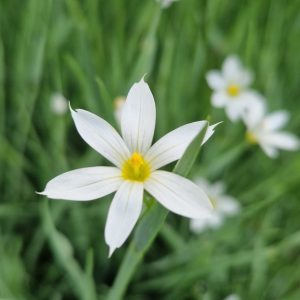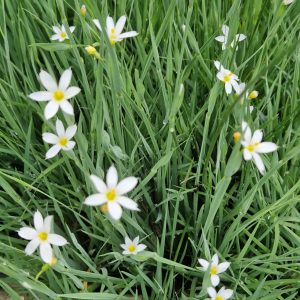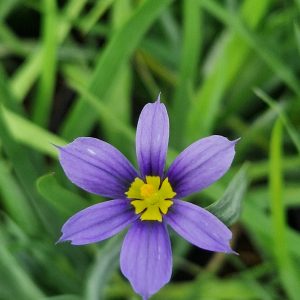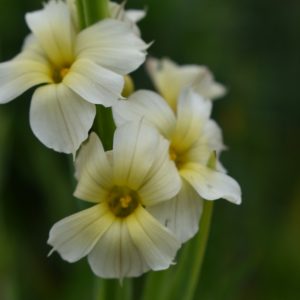Sisyrinchium, commonly known as blue-eyed grass, is a charming perennial that produces delicate, iris-like flowers. Follow this planting guide to ensure successful establishment and long-term growth of your sisyrinchium plants.
Choose the Right Location
Sun Exposure: Plant Sisyrinchium in a location with full sun to partial shade. They thrive in well-lit areas, receiving at least 6 hours of sunlight daily.
Soil Preparation
Well-Draining Soil: Sisyrinchium prefers well-draining soil. Amend heavy or clay soils with organic matter like compost to improve drainage.
pH Level: Aim for a slightly acidic to neutral pH level, around 6.0 to 7.0.
Planting Time
Spring or Autumn: Plant sisyrinchium in the spring or autumn when the soil is workable, and temperatures are moderate. Avoid extreme weather conditions.
Spacing
Allow Adequate Space: Space plants 12 to 18 inches apart to provide sufficient room for growth and airflow.
Planting Depth
Proper Depth: Plant sisyrinchium at the same depth as they were in the nursery containers. Ensure the crown is at soil level.
Watering
Regular Moisture: Keep the soil consistently moist during the growing season. Water deeply when the top inch of soil feels dry.
Drought Tolerance: Once established, sisyrinchium is somewhat drought-tolerant, but regular watering promotes better blooming.
Mulching
Mulch Application: Apply a layer of mulch around the base of the plants to retain soil moisture, suppress weeds, and regulate soil temperature.
Fertilisation
Minimal Fertilisation: Sisyrinchium generally does not require heavy fertilisation. A light application of a balanced fertiliser in early spring is sufficient.
Deadheading
Regular Removal of Spent Blooms: Deadhead faded flowers regularly to encourage continuous blooming and maintain a neat appearance.
Pest and Disease Management
Vigilant Monitoring: Keep an eye on your plants for signs of pests such as aphids or spider mites. Treat any infestations promptly with insecticidal soap.
Good Air Circulation: Ensure proper spacing and good air circulation to minimise the risk of fungal diseases.
Winter Care
Mulching in Autumn: Apply a layer of mulch around the base of the plants in late autumn to protect the roots from extreme cold temperatures.
Division
Every Few Years: Divide clumps every few years to rejuvenate the plant and maintain its vigour. This is best done in the spring.
Observation and Adjustments
Regular Inspection: Regularly inspect your sisyrinchium plants for any signs of stress, disease, or pests. Adjust care practices as needed based on your observations.
Enjoying the Blooms
Cut Flowers for Arrangements: Sisyrinchium flowers make beautiful additions to floral arrangements. Harvest blooms for bouquets and enjoy their delicate beauty indoors as well.
By following this planting guide, you can establish and maintain healthy Sisyrinchium plants that will reward you with charming blooms throughout the growing season.







